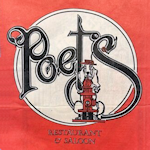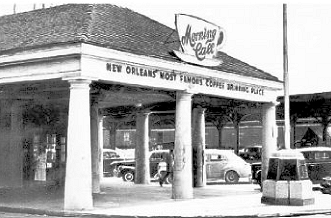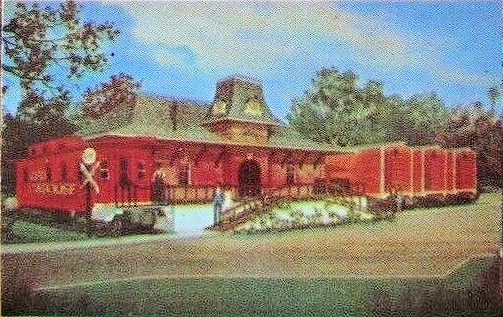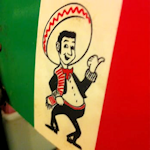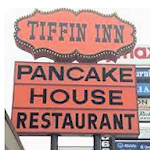Although not technically in the "gone" category just yet, it seems the locally-renowned Bud's Broiler chain of burger restaurants grows smaller with each passing year. Most people aren't even old enough to remember Bud's #1, opened by Austin, TX transplant Alfred "Bud" Saunders in 1952 on Airline Highway near Cleary Ave. It was next to a barroom he thought would be a good driver of business.
Most of the earliest Bud's are no more. #2 on City Park Ave in the architecturally-quirky building, gone (1956-2018, although relocated nearby). Bud's #3 on Banks in the shadow of Dixie Brewery, the old Bud's #4 building on Pelopidas St. and its successor up on Elysian Fields in Gentilly, all Katrina victims.
And among later suburban iterations, Jefferson Highway at Orchard Rd, gone. Clearview Pkwy in Metairie, gone (replaced by clone Ben's Burgers). And, most recently, the iconic A-frame on Vets in Kenner, gone, down to the dirt.
Other casualties include Calhoun St. (1978-2017), Gretna on the Westbank (1985?- ), #9 on Jefferson Hwy at Sauve Rd. (2017-2022), Elysian Fields near UNO (succeeding the venerable Luigi's, 1986-2005).
There are a lot of choices in the burger business these days, with somebody new opening up seems like every other week. Five Guys, Shake Shack, Atomic, Moo-yah, Smashburger, all have entered the local market in recent years; not to mention longtime players New Orleans Hamburger, Lee's and Rally's. Heck, our old NFL quarterback-turned-fast food entrepreneur just opened a sliders drive-thru place in front of Clearview Mall. Tons of competition out there for the burger dollar, for those craving something other than MickeyD's or Wendy's.
Bud's was always distinctive because its burgers were cooked over a real charcoal fire. Unlike a flattop griddle, a gas-fired grill or a chain broiler, the charcoal gave the burgers that backyard barbecue grill flavor not otherwise achievable. And it was that flavor that helped customers overlook the fact that the patties weren't the 1/2, 1/3 nor even the 1/4 pound the others hawk.
For many years, Bud's hours of operation took a curious mid-day two-hour break. Was it because things were slow between lunch and dinner? Was it an employee break period? Nope, it was time needed to clear out the dying coals and rebuild the charcoal bed.
Bud's burgers were prepared with various combinations of these things: cheese, onions, mayo, mustard, chili and a house-made hickory sauce. What, no ketchup?
Ketchup was only offered at a station in the dining room, and you pumped it into those little pleated paper cups yourself.
The cheese was grated cheddar, and was applied as a topping rather than being melted over the burger patty.
Onions were raw and coarsely diced, rather than sliced. Onions were a yes/no option on every burger, the order taker checking a box on the pre-printed order pads to signify the customer's preference.
Chili was primarily for the hotdogs, but could optionally be had on a burger.
Mayo and mustard, according to the menu, seemed oddly to be an either/or thing.
The hickory smoked sauce was more like a thick, sweet, smoky ketchup kept hot and applied liberally to the selections which called for it.
Ordering was by number. The most popular combinations of toppings were codified into numbers 1 through 6, with some additions seen in later years, some perhaps varying by location. But these are the OG burgers, and again, with or without onions:
- Mayonnaise relish sauce
- Hickory smoked sauce
- Grated cheddar cheese; mustard or mayo
- Grated cheddar cheese; chili or hickory smoked sauce
- Lettuce, tomato, pickles; mustard or mayo
- #5 plus grated cheddar cheese
A mystery long confounding Bud's fans was the inconsistency in what adding cheese to a burger cost. A #4 was basically a #2 with added cheese. Similarly, a # 6 was merely a #5 with added cheese. Yet, a #4 cost $1.25 more than a #2, while a #6 cost only a quarter more than a #5.
I was usually a #6 man, but sometimes only a #4 would do (maybe two), with the hickory smoked sauce, please. And yes, with onions.
Bud's was also a good choice for hotdog fans. For each sandwich, dogs were butterflied lengthwise, grilled just like the burgers and served on a hamburger bun.
- Grated cheddar cheese, chili
- Chili
- Hickory smoked sauce
Burgers and hotdogs were served in square, waxed paper envelopes which could be folded back to help manage the messier combinations more tidily.
As time went on, locations added items to diversify the menu: wings, nuggets, fried seafood, grilled chicken breast, crab cakes. The menu numbers and the classic combinations sometimes fell by the wayside. For the Bud's purist, annoying.
- Boneless Chicken Breast lettuce, tomatoes, pickles, mayonnaise, hickory smoked sauce
- Smoked Sausage lettuce, tomatoes, pickles, mayonnaise, hickory smoked sauce
- Fish Filet lettuce, special sauce
The french fries were unique to Bud's. Not only were they thin-cut, they were short as well, and were also originally served packed into one of the paper envelopes. Thankfully, they never seemed to come out less than piping hot, because they tended to get cold quickly.
Although each Bud's was architecturally unique, the menu and, interestingly, the decor were fairly uniform. Rather than commercial-style round or square tables and chairs, seating consisted of oblong picnic-style tables built of solid 2-inch thick pine stock with matching benches, all finished with a clear coat of shellac.
Over the years, patrons engaged in the habit of carving names or initials into the wooden table tops. Management didn't seem to care, and it always gave the restaurants an additional bit of nostalgic charm.
Bud's #4 on Pelopidas in Gentilly was the go-to location for UNO students and certainly the nearby Brother Martin high school for decades. Shoe-horned into a residential neighborhood on a corner lot, it shared the intersection with two cemeteries and a NOPSI sub-station. But no one was there for the view. #4 relocated to Elysian Fields near UNO in the mid-1980s, and the abandoned, Katrina-swamped building on Pelopidas was finally demolished in the late 2000s.
As noted earlier, Bud's Broiler isn't gone yet, but it is fighting a war of attrition that, hopefully, it can find a way to survive. The New Orleans burger scene just wouldn't be the same without it.
Bud's Broiler #1: Burgers, 3826 Airline Dr, Metairie (Metairie Above Causeway) - map
Bud's Broiler #2: Burgers, 500 City Park Ave, New Orleans (Mid-City) - map
Bud's Broiler #3: Burgers, 2338 Banks, New Orleans (Mid-City) - map
Bud's Broiler #4: Burgers, 2073 Pelopidas, New Orleans (Gentilly) - map
